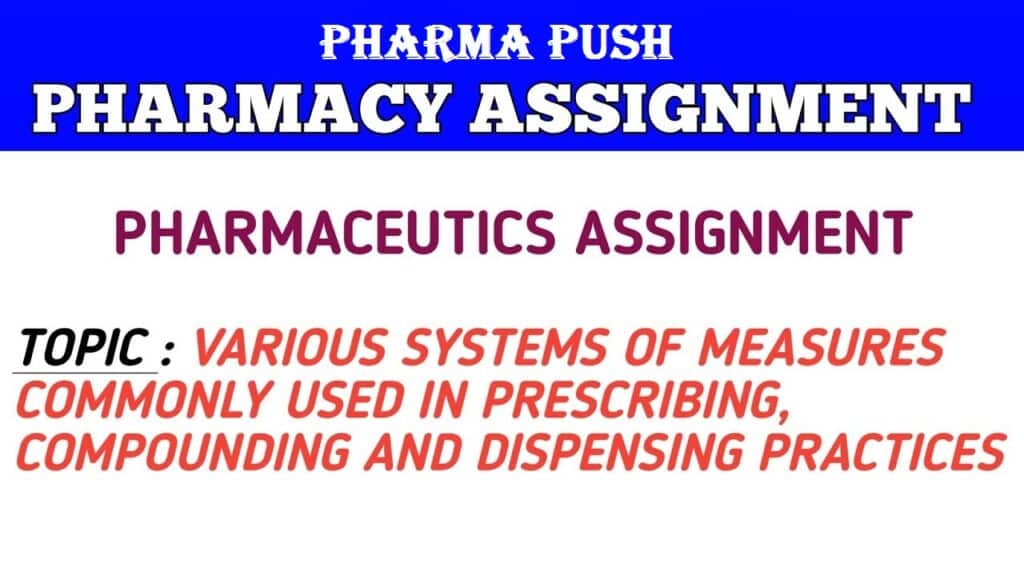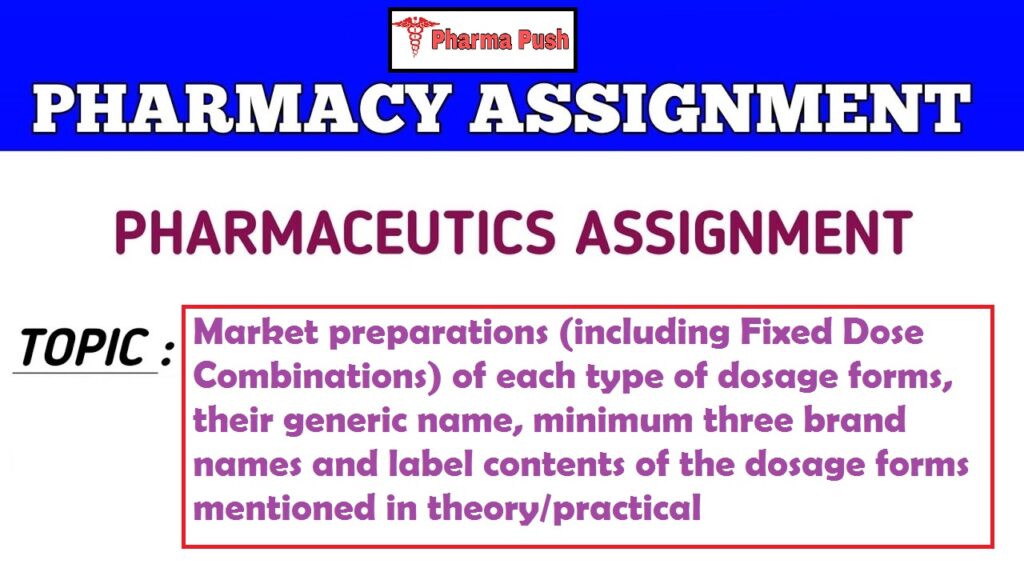Extemporaneous preparations in community or hospital pharmacies and the manufacturing of dosage forms at the industrial level involve the preparation of pharmaceutical products, but they differ significantly in terms of scale, purpose, and regulatory considerations. Here’s an overview of each:
Extemporaneous Preparations at Community/Hospital Pharmacy:
- Scale:
- Small-Scale: Extemporaneous preparations are typically carried out on a small scale to meet specific patient needs.
- Patient-Specific: Pharmacists prepare individualized doses tailored to a patient’s specific requirements.
- Purpose:
- Immediate Needs: Extemporaneous preparations address immediate and short-term patient needs.
- Patient-Specific Solutions: Pharmacists create customized dosage forms to accommodate factors like patient allergies or preferences.
- Regulatory Environment:
- Less Stringent: Regulatory oversight is present, but it is generally less stringent compared to industrial manufacturing.
- Pharmacy Guidelines: Pharmacists follow guidelines set by pharmacy boards and regulatory agencies.
- Flexibility:
- Adaptability: Pharmacists can adapt formulations based on patient feedback or changes in therapy.
- Quick Turnaround: Formulations can be prepared quickly to address urgent patient requirements.
Manufacturing of Dosage Forms at Industrial Level:
- Scale:
- Large-Scale Production: Industrial manufacturing involves large-scale production to meet the demands of a broad population.
- Batch Production: Dosage forms are produced in batches, ensuring consistency and uniformity.
- Purpose:
- Mass Production: The primary goal is to produce a large quantity of dosage forms efficiently and consistently.
- Commercial Distribution: Products are intended for commercial distribution on a wide scale.
- Regulatory Environment:
- Stringent Regulations: Industrial manufacturing is subject to stringent regulatory controls to ensure product safety, efficacy, and consistency.
- Good Manufacturing Practices (GMP): Adherence to GMP is crucial for compliance with regulatory standards.
- Flexibility:
- Standardized Formulations: Formulations are standardized to ensure consistency in every batch.
- Limited Adaptability: Changes in formulations or processes are subject to rigorous validation procedures.
- Quality Control:
- Comprehensive Testing: Rigorous testing and quality control measures are implemented to ensure the uniformity and stability of each batch.
- Continuous Monitoring: Continuous monitoring of manufacturing processes is crucial to maintain product quality.
In summary, extemporaneous preparations at community or hospital pharmacies are personalized, patient-centric, and on a smaller scale. In contrast, industrial manufacturing involves large-scale production, stringent regulations, and a focus on standardized, commercially distributed dosage forms. Both play essential roles in the pharmaceutical landscape, meeting distinct needs within the healthcare system.
You May Like: Various systems of measures commonly used in prescribing, compounding and dispensing practices
Certainly, let’s delve deeper into some specific aspects of extemporaneous preparations in community/hospital pharmacies and manufacturing of dosage forms at the industrial level:
Extemporaneous Preparations at Community/Hospital Pharmacy:
- Ingredients and Formulations:
- Diverse Ingredients: Pharmacists may use a variety of raw materials and ingredients available in the pharmacy.
- Tailored Formulations: Formulations can be adjusted based on patient-specific requirements, such as allergies or the need for a liquid dosage form.
- Compounding Practices:
- Manual Compounding: Compounding is often done manually by pharmacists.
- Small Batches: Compounded products are made in small, patient-specific batches.
- Documentation:
- Patient Records: Pharmacists maintain detailed records of compounded formulations for each patient.
- Traceability: Documentation includes information on ingredients, compounding procedures, and dispensing.
- Professional Judgment:
- Pharmacist Expertise: The compounding pharmacist relies on professional judgment and knowledge.
- Patient Consultation: Pharmacists may consult with patients to address specific needs or preferences.
Manufacturing of Dosage Forms at Industrial Level:
- Equipment and Automation:
- Specialized Equipment: Industrial manufacturing involves advanced machinery and automated processes.
- Precision and Efficiency: Automation ensures precision in dosing and efficiency in production.
- Standardization:
- Formulation Consistency: Dosage forms are manufactured with strict adherence to standardized formulations.
- Batch-to-Batch Consistency: Emphasis on maintaining consistency and uniformity across different batches.
- Quality Assurance:
- Quality Systems: Robust quality systems are in place to ensure the highest standards of product quality.
- Batch Release Testing: Products undergo thorough testing before release to the market.
- Regulatory Compliance:
- Regulatory Submissions: Manufacturers submit extensive documentation for regulatory approval.
- Inspections: Regular inspections by regulatory authorities ensure compliance with GMP and other regulatory standards.
- Packaging and Labeling:
- Uniform Packaging: Products are uniformly packaged for mass distribution.
- Regulatory-Compliant Labels: Labels comply with regulatory requirements and provide essential information to consumers.
- Economies of Scale:
- Cost Efficiency: Large-scale production allows for economies of scale, contributing to cost efficiency.
- High Volume Production: Meeting the demands of a large market requires efficient and high-volume production processes.
In summary, while extemporaneous preparations focus on customization and immediate patient needs, industrial manufacturing prioritizes efficiency, standardization, and compliance with rigorous regulatory standards to produce pharmaceutical products at a much larger scale. Both approaches contribute to the overall goal of providing safe and effective medications to patients.


